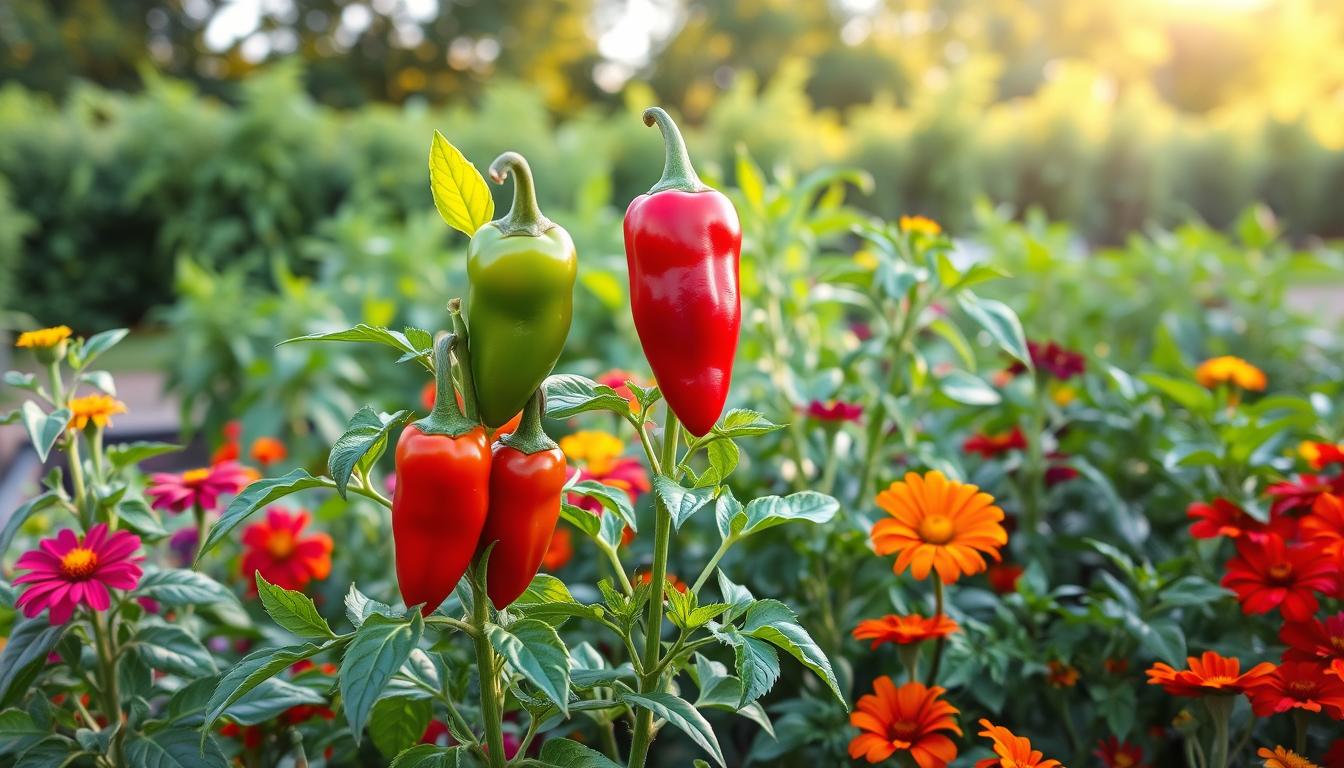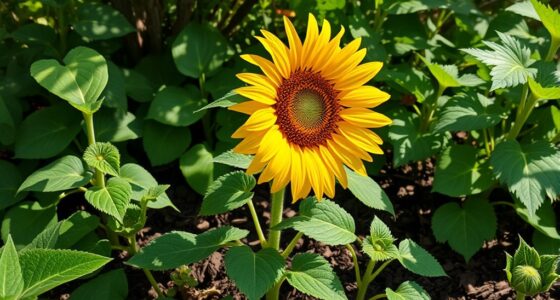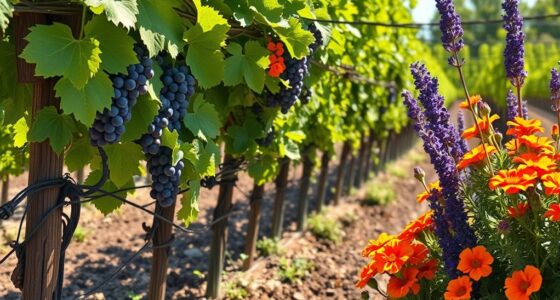There’s an undeniable joy that comes from nurturing a garden, isn’t there? As you dig your hands into the soil, the warmth of the sun on your back, you can’t help but feel a deep connection to nature. It’s a place where anticipation blooms alongside your plants, especially when it comes to growing jalapenos. If you’ve ever tasted the vibrant, spicy kick of a freshly picked jalapeno, you know just how rewarding your efforts can be. To truly enhance your gardening experience and watch your jalapenos thrive, companion planting is your secret weapon. By selecting the ideal plants to pair with jalapenos, you can boost your garden’s growth, flavor, and overall health. Stick around as we explore the best jalapeno companion plants that promise to transform your patch into a flourishing paradise.
Key Takeaways
- Jalapeno companion plants can enhance growth and flavors.
- Companion planting helps in managing pest problems organically.
- Choosing the right partners for jalapenos is essential for a thriving garden.
- Flowers and herbs can be beneficial companions in your garden.
- Effective plant pairings lead to better soil health and nutrient availability.
The Benefits of Companion Planting
Companion planting serves as an effective method for boosting the health and productivity of your garden, particularly with jalapenos. This technique involves pairing jalapeno plants with other species that enhance jalapeno growth and flavor, as well as providing natural pest control solutions.
Enhancing Growth and Flavor
One of the key benefits of companion planting is its ability to promote growth and enrich flavor. For instance, planting basil alongside jalapenos not only improves the taste of your peppers but also acts as a ground cover. Such beneficial plant placements create a symbiotic relationship, aiding in nutrient absorption and overall plant vitality.
Pest Control Advantages
Pest control with companion planting is another significant advantage for gardeners. Many companion plants attract predatory insects that keep harmful pests away from delicate jalapeno plants. By incorporating certain plants, you can create a balanced ecosystem that naturally reduces the need for chemical pesticides, ensuring your jalapenos thrive without added stress.
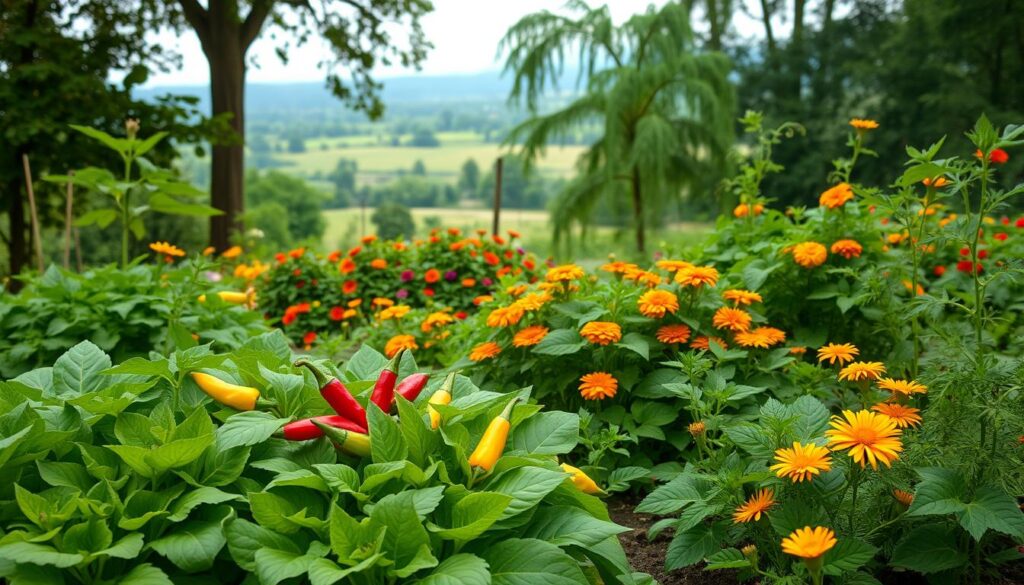
Best Companion Plants for Jalapenos
Creating a thriving garden with jalapenos involves choosing the right companions. Certain plants not only coexist well but actively improve growth and flavor. Here’s a closer look at some of the best plants to grow with jalapenos that can enhance your gardening experience.
Basil: A Flavorful Ally
Basil stands out as an ideal companion with jalapenos due to its ability to enhance flavors. This aromatic herb not only complements the spicy notes of the peppers but also serves as a natural pest repellent. By planting basil near jalapenos, you can deter common pests like aphids and spider mites, ensuring your plants remain healthy.
Marigolds: Natural Pest Deterrent
Marigolds are well recognized for their pest-controlling properties, making them fantastic jalapeno garden partners. Their vibrant blooms attract beneficial insects such as ladybugs, which prey on harmful pests. By incorporating marigolds in your garden, you can create a protective barrier while adding beauty to your space.
Tomatoes: Beneficial Neighbors
Tomatoes share similar growing conditions with jalapenos, making them excellent companions. By planting them together, both crops benefit from their proximity. Tomatoes can provide shade for jalapenos, and in return, jalapenos can enhance the overall flavor and yield of your tomato plants.

| Companion Plant | Benefits |
|---|---|
| Basil | Enhances flavor and repels pests |
| Marigolds | Deters harmful insects and attracts beneficial ones |
| Tomatoes | Improves flavor and provides shade |
Herbs That Pair Well with Jalapenos
Enhancing your jalapeno plants with the right herbs can lead to improved flavor and increased pest resistance. Certain herbs that support jalapenos work exceptionally well alongside them, elevating both growth and culinary outcomes. Consider adding these compatible plants for jalapenos to your garden.
Oregano: Flavor Enhancement
Oregano is a flavorful addition to any garden, known for its culinary uses and ability to attract beneficial insects. Planting oregano near jalapenos not only adds flavor to your dishes but also enhances the overall performance of your jalapeno plants.
Cilantro: A Complementary Herb
Cilantro is a versatile herb that pairs beautifully in various recipes. Beyond its culinary delight, cilantro attracts beneficial insects while repelling less desirable ones, like spider mites. This makes it an excellent choice among herbs that support jalapenos and benefit the overall garden ecosystem.
Thyme: Versatile and Supportive
Thyme offers a ground-covering quality that helps retain soil moisture while protecting your jalapeno plants from pests. Its charm lies in its versatility, making it one of the ideal compatible plants for jalapenos. This herb creates a healthier growing environment, allowing your jalapenos to flourish.

Vegetables That Thrive Alongside Jalapenos
Integrating vegetables that grow well with jalapenos can significantly enhance your gardening experience. These jalapeno plant companions not only coexist harmoniously in the garden but also contribute to improved growth, pest control, and efficient space utilization. Below are some excellent options that thrive alongside jalapenos.
Onions: Dual Benefits
Onions serve a dual purpose in your garden. Their robust scent can deter pests such as aphids and cabbage worms, protecting your jalapeno plants. Additionally, onions do not compete for soil nutrients, allowing both plants to flourish close together.
Carrots: Space Savers
Carrots are another fantastic choice, providing excellent shade for their delicate tops. They will help to loosen the soil around them, which benefits both the carrots and jalapenos. This combination makes for a productive use of limited garden space, demonstrating the benefits of selected vegetables that grow well with jalapenos.
Cucumbers: Growing Together
Cucumbers can also make great companions for jalapenos by utilizing vertical space effectively. When planted together, they maximize yield while avoiding overcrowding. This synergy not only enhances productivity but also promotes healthy plant growth.
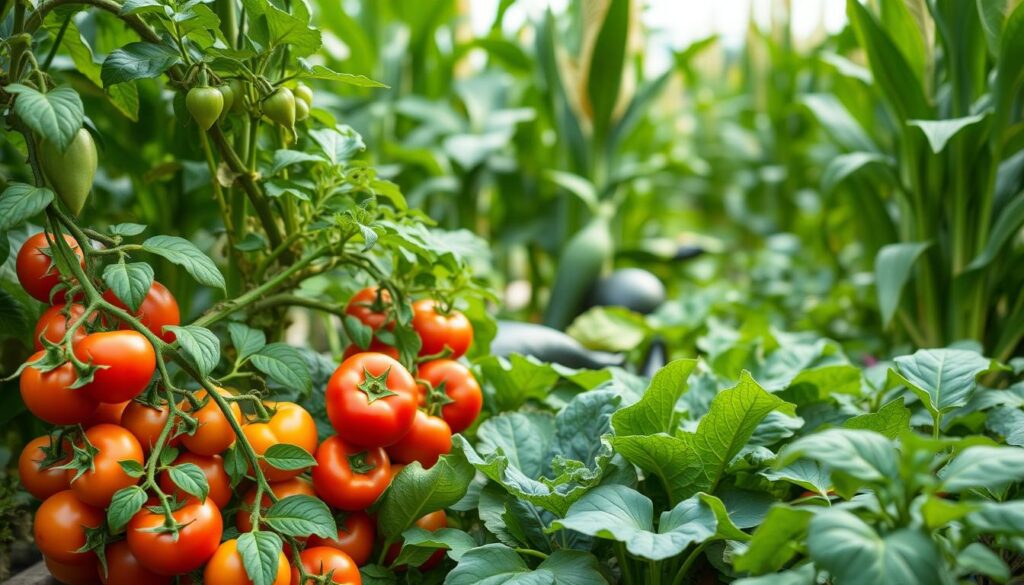
Flowers That Support Jalapeno Growth
Integrating flowers into your garden not only enhances its beauty, but certain flowers also play a crucial role in supporting the growth of jalapenos. Choosing the right companion planting flowers can lead to healthier plants and a more fruitful harvest. Here are two standout options that you should consider.
Nasturtiums: Bright and Beneficial
Nasturtiums bring a vibrant pop of color to your garden while serving a practical purpose. These gorgeous flowers are known to attract pests like aphids away from your jalapenos, acting as a natural trap crop. By doing this, nasturtiums help protect your pepper plants, allowing them to thrive without the stress of pest damage.
Borage: Pollinator Magnet
Borage stands out for its ability to attract an array of pollinators such as bees and butterflies. This increased pollination activity can significantly benefit your jalapeno plants, leading to improved fruit production. Additionally, borage enriches the soil with vital nutrients, fostering an optimal growing environment for jalapenos.
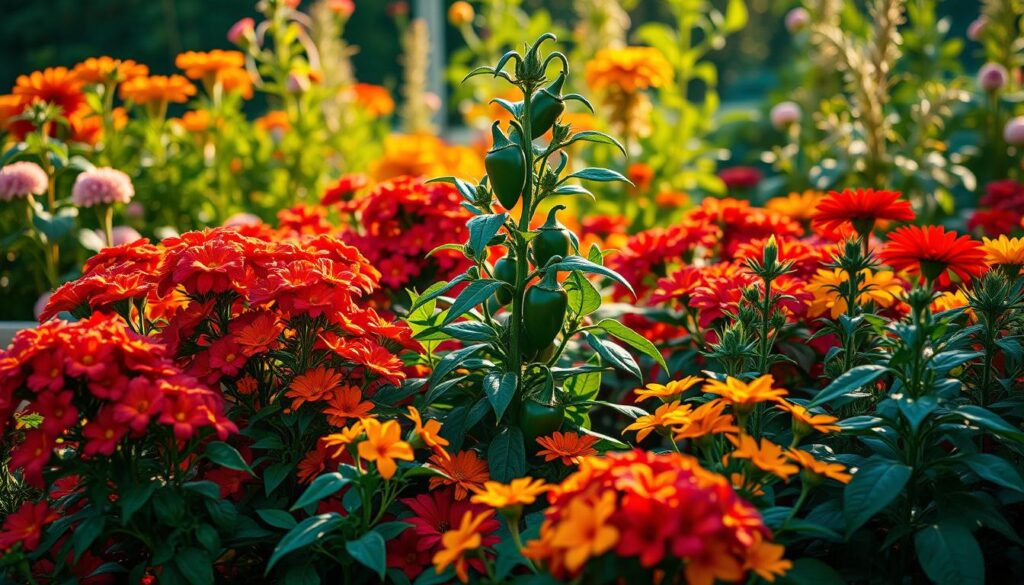
Plants to Avoid Near Jalapenos
When planning your garden, being aware of the plants to avoid near jalapenos is vital for ensuring a thriving crop. Certain plants can compete for nutrients or introduce diseases, affecting jalapenos’ growth and overall health. Familiarizing yourself with these incompatible jalapeno partners helps you make informed decisions as you design your garden layout.
Fennel: Competitive Plants
Fennel is a notoriously competitive plant that can overshadow jalapenos. It tends to consume a considerable amount of nutrients, leaving little for your jalapenos. This competition can stunt the growth of your peppers, leading to decreased yields.
Potatoes: Strain on Resources
Planting potatoes near jalapenos poses a significant challenge. As heavy feeders, potatoes compete for the same nutrients and water. This resource strain can hinder both plants, resulting in poor development and lower harvests.
Cauliflower: Susceptible to Disease
Cauliflower, belonging to the brassica family, is particularly prone to diseases that can easily transfer to jalapenos. Keeping these two plants apart helps protect your jalapenos from potential infections, ensuring they remain healthy and robust.
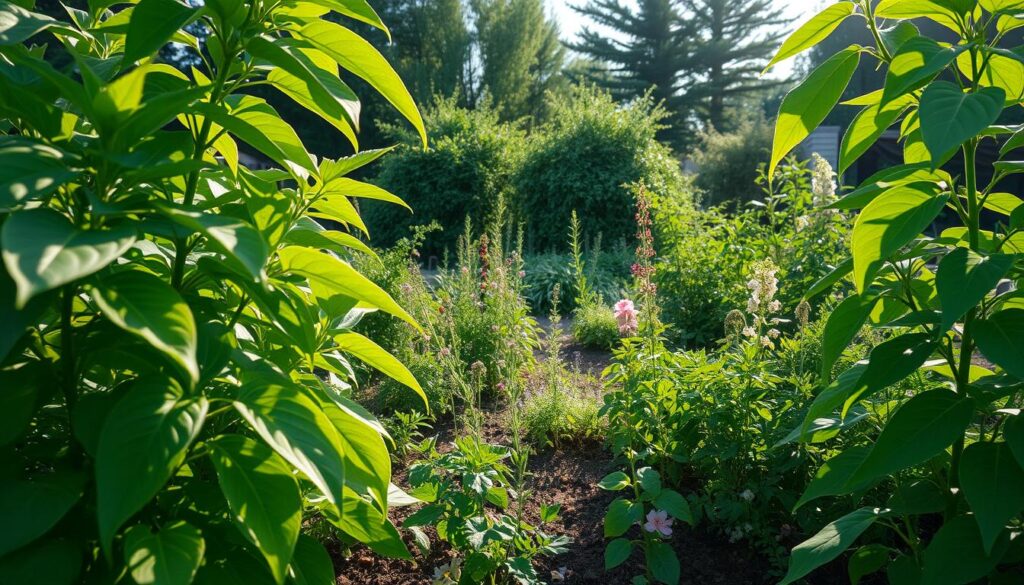
| Plant | Reason to Avoid |
|---|---|
| Fennel | Competes for nutrients |
| Potatoes | Strains resources |
| Cauliflower | Prone to diseases that affect jalapenos |
Soil and Nutrient Requirements for Companion Plants
Ensuring the right soil and nutrient balance is critical when growing jalapenos and their companion plants. High-quality soil provides a healthy environment for root development and moisture retention. It’s essential to consider specific soil requirements for jalapenos, which thrive in well-draining, loamy soil rich in organic matter. Additionally, companion plants also benefit from similar soil conditions, which fosters a harmonious growth environment for all species involved.
Importance of Soil Quality
Healthy soil forms the foundation for vibrant plants. For jalapenos, the ideal soil should maintain a pH level between 6.0 and 6.8. This acidity range supports nutrient absorption vital for robust plant growth. When you pair jalapenos with companion plants, ensuring they share similar soil quality helps minimize competition and enhances overall garden productivity.
Nutrient Needs to Consider
Understanding the nutrient needs is important in companion planting. Jalapenos typically require nitrogen, phosphorus, and potassium, along with trace minerals such as magnesium and calcium. Companion plants can contribute to this nutritional network, creating a symbiotic relationship. When planning your garden, assess the specific nutrient requirements for companion plants to ensure they complement the needs of jalapenos, leading to healthier plants and better yields.

How to Arrange Your Garden for Companion Planting
Creating a successful companion planting garden layout requires strategic planning. The idea is to arrange jalapeno companions and other plants in a way that promotes growth and maximizes space. Keeping compatible plants close together can lead to enhanced biodiversity, resulting in a healthier garden environment.
Planning Your Garden Layout
Start by visualizing your garden and determining the best areas for planting. Consider the sunlight requirements, soil type, and the height of each plant. When arranging jalapeno companions, position taller plants to the north to avoid shading shorter varieties. This arrangement allows light to reach all plants effectively.
Grouping for Maximum Impact
Grouping plants that benefit each other is key when planning your companion planting garden layout. Focus on placing jalapenos alongside their ideal companions such as basil and marigolds, which can deter pests and enhance flavor. This strategic grouping minimizes pest issues and the necessity for fertilizers, ultimately leading to higher yields.
| Plant Pairing | Benefits |
|---|---|
| Jalapenos and Basil | Flavor enhancement and pest deterrence. |
| Jalapenos and Marigolds | Natural pest control. |
| Jalapenos and Tomatoes | Mutually beneficial growth and space optimization. |
| Jalapenos and Onions | Companion benefits with reduced pest prevalence. |
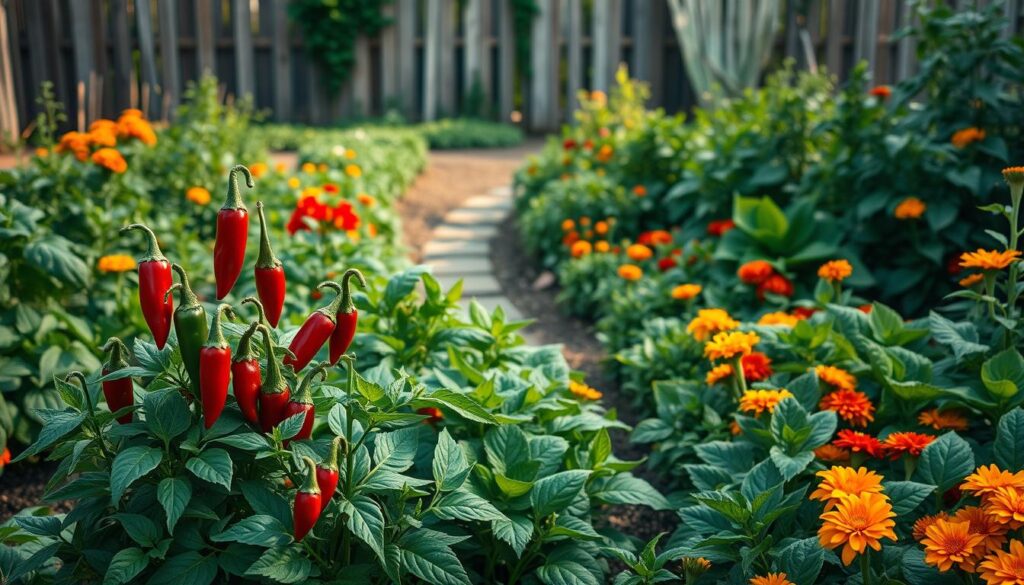
Seasonal Considerations for Jalapeno Companion Plants
Understanding the timing of seasonal planting for jalapenos is fundamental to achieving a vibrant garden. The success of growing jalapenos with companions depends significantly on the seasons. Knowing when to plant ensures that both your peppers and their companion plants receive optimal growth conditions.
Best Seasons for Planting
The ideal period for planting jalapenos generally falls between late spring and early summer. During this timeframe, the risk of frost diminishes, and the soil temperature rises, creating perfect conditions for both jalapenos and their companions. Selecting the right companions that share the same growing season maximizes your garden’s potential.
Temperature Impact on Growth
Jalapenos thrive in warm conditions, with temperatures between 70°F to 85°F being optimal. When selecting companion plants, consider those that can endure similar heat levels. Plants like tomatoes and basil not only complement jalapenos but also prefer similar environmental conditions, enhancing the success of your garden overall.
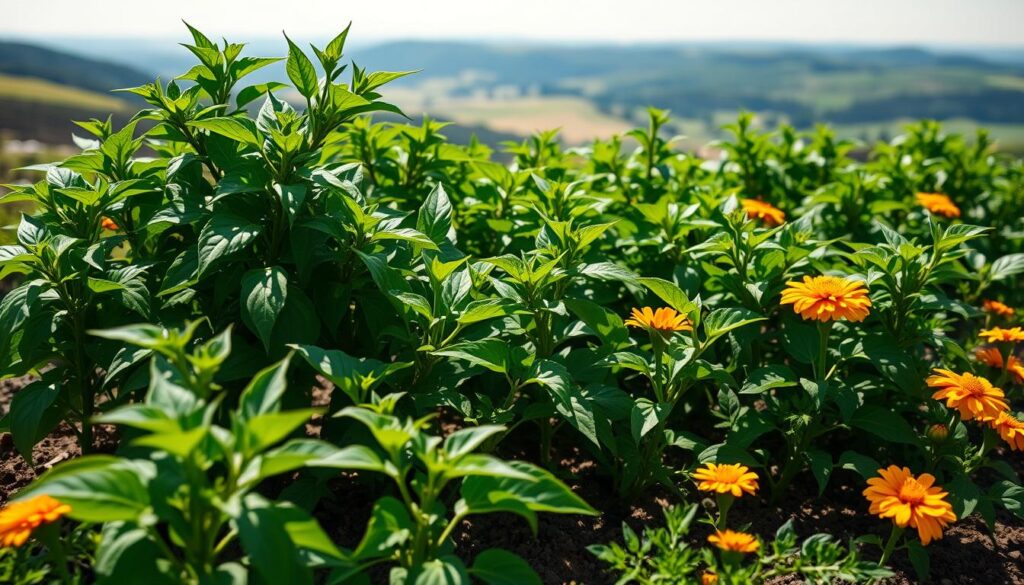
Tips for Success with Companion Planting
To achieve tips for companion planting success, maintaining regular maintenance and monitoring is crucial for your jalapeno garden. Keeping a close eye on your plants allows you to identify any pest problems early, which can significantly reduce potential damage. Additionally, monitoring your garden ensures that the nutrient requirements of both jalapenos and their companion plants are continually met.
Regular Maintenance and Monitoring
Establishing a routine for checking your plants will help you catch any issues that could affect growth. Inspect leaves and stems for signs of pests or disease, and take action promptly when needed. Nutrient deficiencies can also present challenges, so be sure to provide adequate fertilizers according to the specific needs of both jalapenos and companion plants.
Adjusting Based on Growth Observations
Being attentive to growth patterns is essential for achieving optimal conditions in your garden. For instance, if certain plants appear to be overshadowing their companions, consider repositioning them to ensure each plant receives sufficient sunlight. This small adjustment can lead to healthier growth and a more productive jalapeno garden.
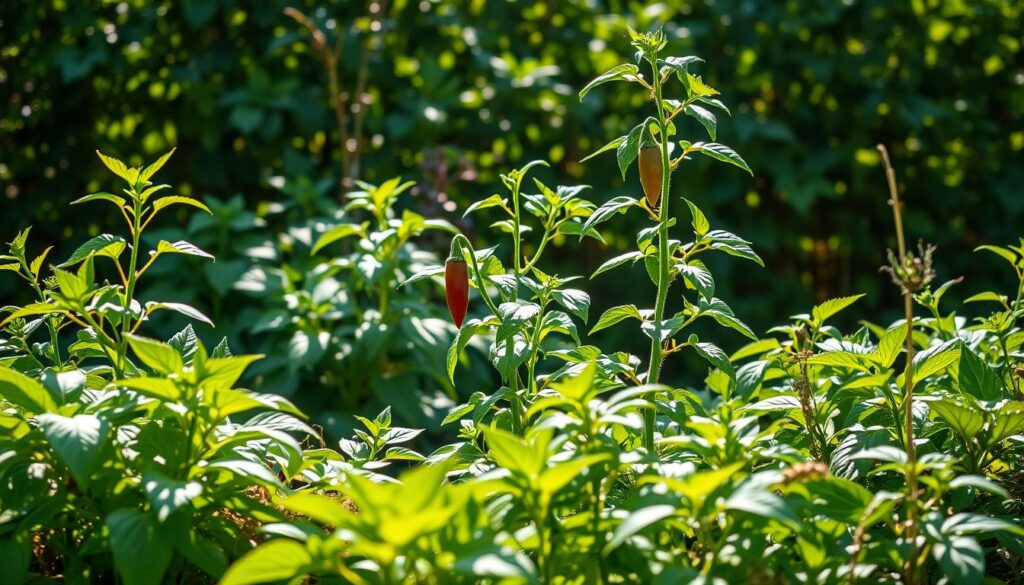
The Role of Pollinators in Your Companion Garden
Creating a thriving jalapeno garden involves more than just selecting the right companion plants. Integrating pollinators plays a vital role in enhancing your garden’s overall productivity. Including plants that attract beneficial insects can significantly improve fruit set in your jalapenos.
Attracting Bees and Butterflies
Bees and butterflies act as essential pollinators in your jalapeno garden. Planting a variety of flowering species provides a rich nectar source, fostering a habitat that invites these helpful creatures. Consider incorporating herbs and flowers that bloom at different times throughout the growing season to maintain a steady influx of pollinators. Options like lavender, zinnias, and sunflowers create an attractive landscape while encouraging the presence of these beneficial insects.
Creating a Pollinator-Friendly Space
Establishing an inviting space for pollinators involves various strategies. Leave some areas of your garden a bit wild to provide shelter and nesting spots for bees. Additionally, avoiding chemical pesticides contributes to a healthier environment for attracting beneficial insects. Water sources, such as shallow dishes or bird baths with stones, can significantly enhance the appeal of your garden to pollinators in jalapeno garden.
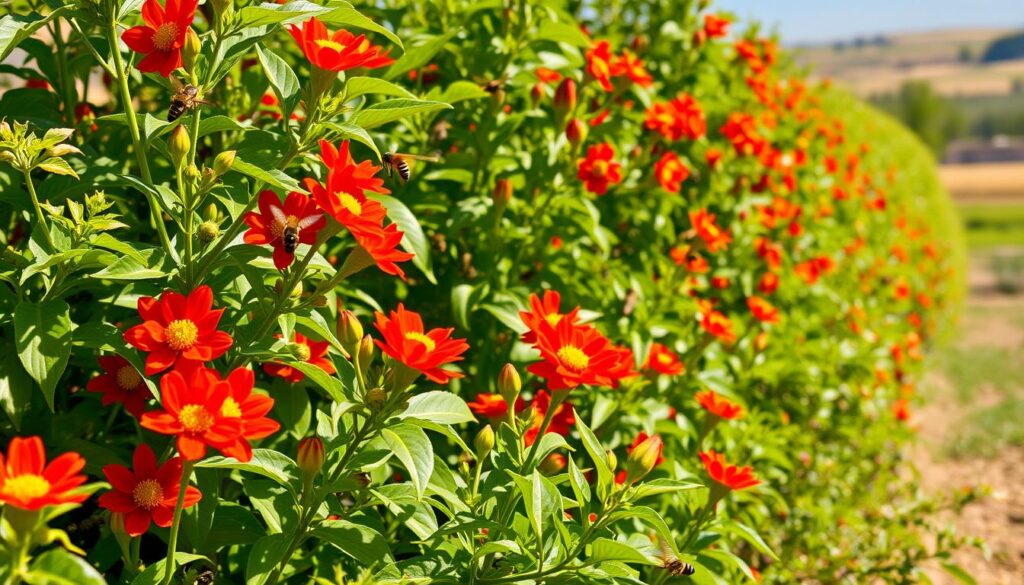
Companion Plant Pairing Strategies
Implementing effective companion plant pairing strategies can significantly enhance the growth and productivity of your jalapenos. By understanding the dynamics between different plants, you can create a thriving garden that maximizes space and benefits every plant involved. Utilizing various planting techniques for jalapenos will ensure they receive optimal light and nutrient access, allowing them to flourish alongside their companions.
Vertical vs. Horizontal Planting
Vertical planting techniques can make the most of your garden’s space. Taller plants, such as tomatoes, can be positioned to shade shorter jalapeno plants from the scorching sun. This arrangement not only conserves moisture but also helps maintain a stable temperature for the jalapenos. On the other hand, horizontal planting spreads plants across the ground, allowing for easier access while maximizing soil usage. Combining these methods can lead to a well-organized and productive garden.
Overhead Canopy Effects
Understanding the overhead canopy effects of various plants is essential in arranging your garden layout. A structured canopy can protect your jalapenos from excessive sunlight, which can hinder their growth. By placing taller crops to the north or west of your jalapenos, you ensure they receive partial shade during the hottest times of the day. This strategic positioning fosters an ideal microclimate, allowing both the jalapenos and neighbor plants to thrive.
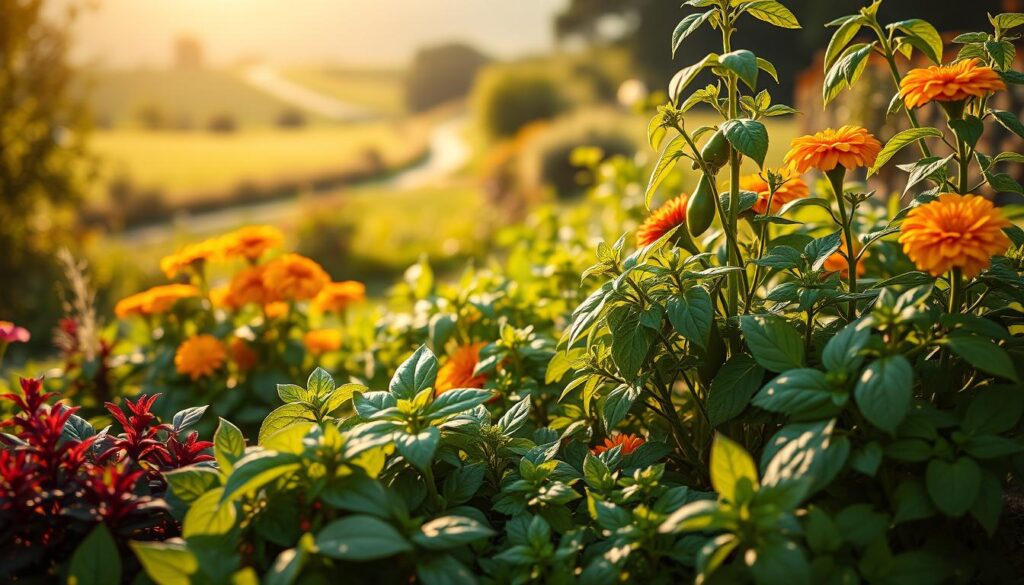
Watering Techniques for Companion Gardens
When it comes to watering techniques for jalapeno plants and their companions, the key lies in consistency and attentiveness. Regularly providing about 1-2 inches of water per week will help ensure that both jalapenos and their neighboring plants receive the hydration they need to thrive. Be mindful that your irrigation for companion gardens may need to be adjusted based on the weather and soil conditions.
Optimal Watering Practices
To develop a successful watering routine, consider implementing the following practices:
- Water early in the morning to reduce evaporation.
- Check soil moisture frequently to determine if watering is necessary.
- Use drip irrigation to minimize water wastage and deliver moisture directly to the roots.
- Apply mulch in the garden to retain soil moisture and regulate temperature.
Recognizing Signs of Over/Under Watering
Understanding how your plants respond to water is essential for their health. Look out for these signs:
| Condition | Signs |
|---|---|
| Overwatering | Yellowing leaves, root rot, wilting despite wet soil |
| Underwatering | Wilting leaves, dry soil, stunted growth |
Maintaining proper watering techniques for jalapeno plants will not only benefit them but enhance the entire companion garden as well. Stay attentive to your plants to ensure they thrive in their growing environment.

Pest Management in Companion Planting
In your quest for a thriving jalapeno garden, effective pest management plays a crucial role. Utilizing eco-friendly pest control methods ensures a healthy balance in your garden ecosystem, making it possible to fend off unwanted invaders while protecting beneficial insects. Encouraging natural predators can be a key component of your pest management strategy.
Natural Predators to Encourage
Integrating certain flowers into your garden can help attract beneficial insects such as ladybugs and lacewings. These natural predators feast on aphids and other harmful pests, reducing the need for harsh chemicals. Consider planting:
- Calendula: Attractive to many beneficial insects.
- Yarrow: Provides nectar for ladybugs and hoverflies.
- Dill: A favorite for lacewings.
Eco-Friendly Pest Control Options
Explore various eco-friendly pest control methods that help manage pests effectively without jeopardizing the health of your jalapeno plants. Here are some options:
- Insecticidal soaps, which target soft-bodied insects without harming beneficial ones.
- Neem oil, a natural pesticide that disrupts insect life cycles.
- Biological pest control agents like beneficial nematodes, which target soil-dwelling pests.
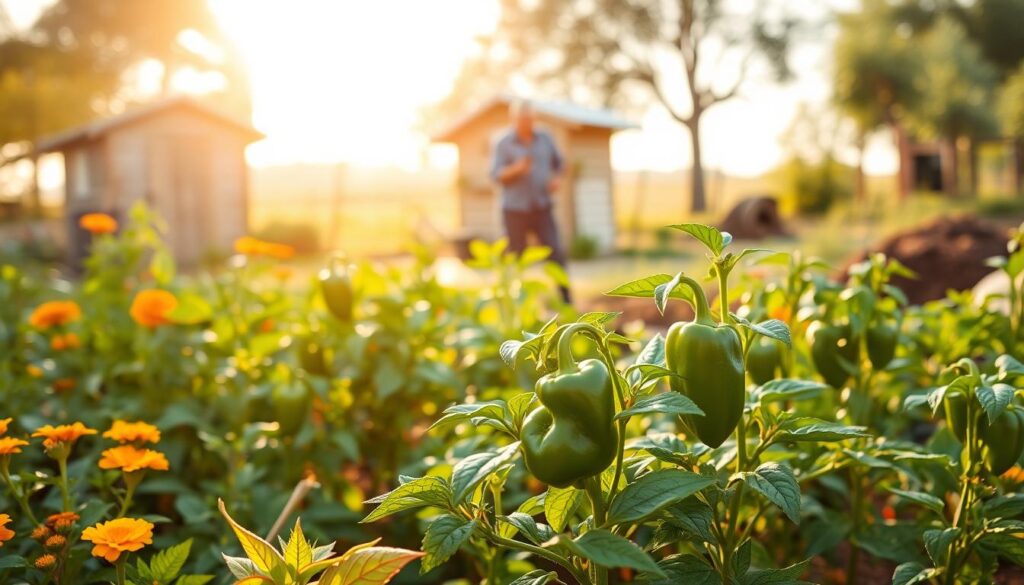
Harvesting and Enjoying Your Jalapeno Crop
Harvesting jalapenos at the right time enhances their flavor and ensures that you make the most of your efforts. You’ll want to look for jalapenos that are firm, shiny, and still green, which typically indicates optimal flavor. This stage usually occurs around 70 to 85 days after planting, making it essential to keep an eye on your crop as it matures. Properly timing your harvest contributes significantly to the quality of your jalapeno dishes.
When to Harvest for Best Flavor
To ensure the best flavor profile in your jalapenos, observe their size and color. Generally, you should aim to pick them when they reach about 3 to 4 inches in length. Not only does timing affect taste, but it also influences the level of spiciness. Ripe jalapenos offer a perfect balance of heat and flavor, perfect for various culinary applications.
Storing and Preserving Jalapenos
After harvesting jalapenos, proper storage is essential to maintain their freshness. Refrigeration can keep your peppers crisp for weeks, allowing you to enjoy your harvest longer. Alternatively, you can explore freezing as a method for preserving jalapeno crop. This approach retains flavor and texture, making them suitable for later use in salsas, sauces, or other dishes. Whether you choose refrigeration or freezing, ensuring your jalapenos are well-preserved allows you to savor the spoils of your hard work for months to come.
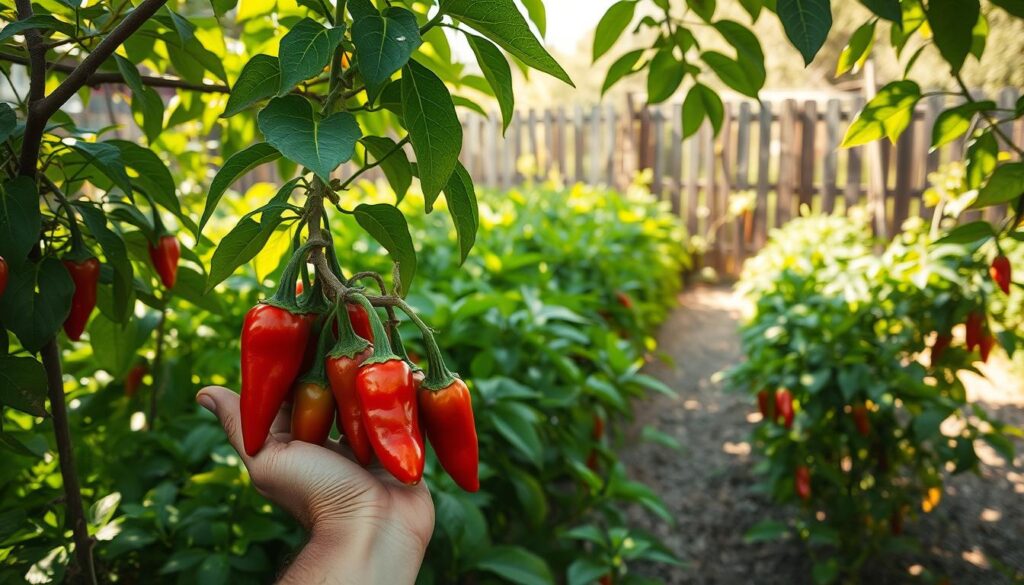
Expanding Your Gardening Knowledge
As you embark on your journey of companion planting with jalapenos, tapping into reliable gardening resources can be tremendously beneficial. Books, reputable websites, and online forums offer a wealth of information on growing practices, pest management, and plant pairings. By utilizing these resources, you can refine your skills and enhance the success of your garden.
Resources for Companion Planting
To expand your knowledge further, consider exploring various gardening textbooks that specialize in companion planting. These texts often provide detailed insights, practical techniques, and the science behind why certain plants thrive together. Additionally, joining online forums dedicated to gardening can facilitate discussions, allowing you to connect with experienced gardeners who share their tips and tricks. Utilizing these gardening resources can empower you to make informed decisions for your jalapeno plants and their companions.
Local Gardening Clubs and Communities
Engaging with local gardening communities can transform your gardening experience. These clubs often host workshops, plant exchanges, and group outings that foster a spirit of collaboration and learning. By participating, you can gain firsthand knowledge from fellow gardeners, share your own experiences, and receive encouragement. Being part of a gardening community not only enriches your understanding of jalapeno cultivation but also provides a supportive network that celebrates the joys of gardening together.
